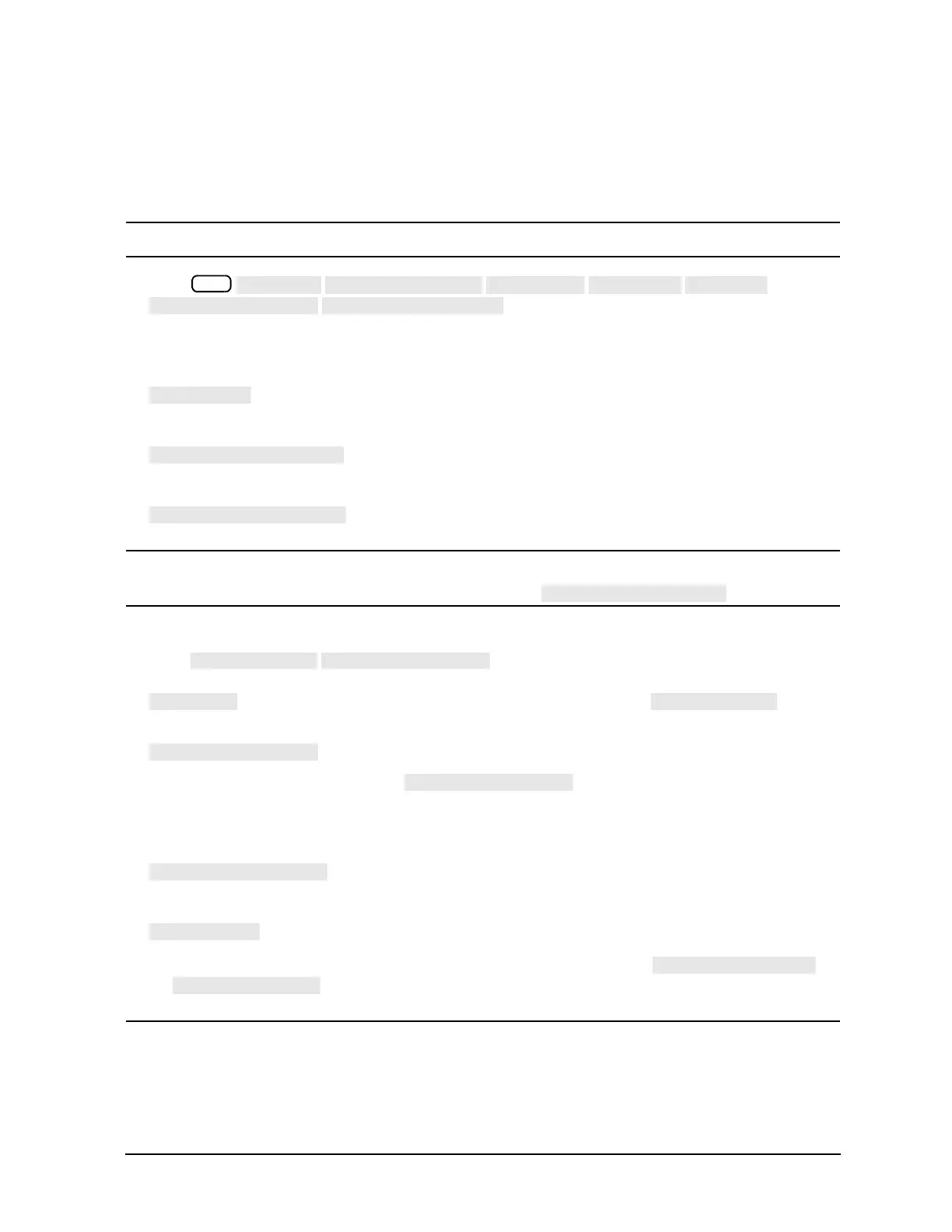6- 55
Calibrating for Increased Measurement Accuracy
LRM Error Correction
Perform the LRM Calibration
1. You must have a LRM calibration kit defined and saved in the USER KIT, as shown in "Modifying
Calibration Kits" on page 7-57.
NOTE This must be done before performing the following sequence.
2. Press
.
3. To measure the "LRM THRU," connect the "zero length" transmission line between the two test ports.
4. To make the necessary four measurements, press:
5. To measure the "LRM SHORT," connect the short to PORT 1, and press:
6. Connect the short to PORT 2, and press:
NOTE If loads can be connected to both port 1 and port 2 simultaneously, then the following LRM
load measurement can be performed using the softkey.
7. To measure the "LRM LOAD," disconnect the short and connect the LRM load to PORT1.
8. Press to access the No Loads menu. When the displayed
trace settles, press the softkey corresponding to the load used. If a sliding load is used, press
to access the Sliding Load menu. Position the slide and press .
9. When all the appropriate load measurements are complete, the load data is measured and the
softkey label is underlined.
10. Connect the load to PORT 2 and press .
11. Repeat the previous LRM load measurement steps for PORT 2.
12. After the measurement is complete, press:
13. To measure the "ISOLATION" class, press:
❏ You could choose not to perform the isolation measurement by pressing
.
NOTE You should perform the isolation measurement when the highest dynamic range is desired.
To perform the best isolation measurements, you should reduce the system bandwidth or
activate the averaging function.

